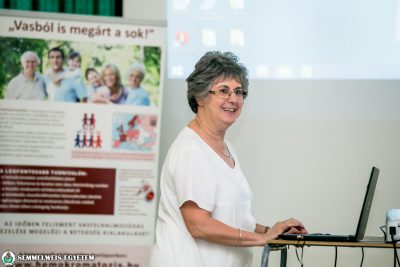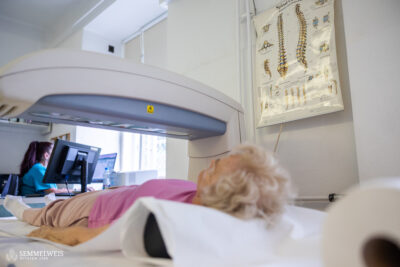Haemochromatosis is the most common inherited genetic disorder in Europe, in which iron accumulated in the body can lead to severe organ and tissue damage if not detected and treated in time. The disease does not have typical symptoms, as fatigue, depression and joint pain can be signs of other diseases and are therefore difficult to recognize.
 As iron is not excreted from the body of haemochromatosis patients, frequent blood donations – even weekly or fortnightly – may be a therapeutic tool, as haemoglobin in the blood and excreted by blood donation contains iron. During a blood transfusion, 4 dl of blood is taken from the patient, which is enough to remove 100 mg of iron. While previously this blood was treated as hazardous waste, since 2018, due to a change in national legislation, blood from patients with haemochromatosis is also used, as in this case the red blood cell is intact and does not harm the recipient,” explains Dr. Judit Várkonyi.
As iron is not excreted from the body of haemochromatosis patients, frequent blood donations – even weekly or fortnightly – may be a therapeutic tool, as haemoglobin in the blood and excreted by blood donation contains iron. During a blood transfusion, 4 dl of blood is taken from the patient, which is enough to remove 100 mg of iron. While previously this blood was treated as hazardous waste, since 2018, due to a change in national legislation, blood from patients with haemochromatosis is also used, as in this case the red blood cell is intact and does not harm the recipient,” explains Dr. Judit Várkonyi.
The Associate Professor of the Department of Internal Medicine and Haematology of Semmelweis University added that according to the new procedure, if there is no history of diabetes, arthropathy (joint disease), heart or lung involvement, skin lesions, stroke or any other criteria, the patient can be a blood donor.
Young men are more at risk of the disease than women, as women also lose iron naturally during the monthly cycle. This condition, in case it is not recognised in time and carried for decades, can also present with cirrhosis and liver cancer in patients in their fifties.
In more than three quarters of patients, blood transfusion can stabilize iron stores. Those whose veins do not allow frequent blood draws need to be treated with so-called chelation agents, which bind iron. New agents are currently being tested in the United States to see if they are effective, so it is expected that in a few years more drugs will be available as part of the treatment.
Orsolya Dávid
Translation: Viktória Kiss
Photo: Attila Kovács – Semmelweis University


